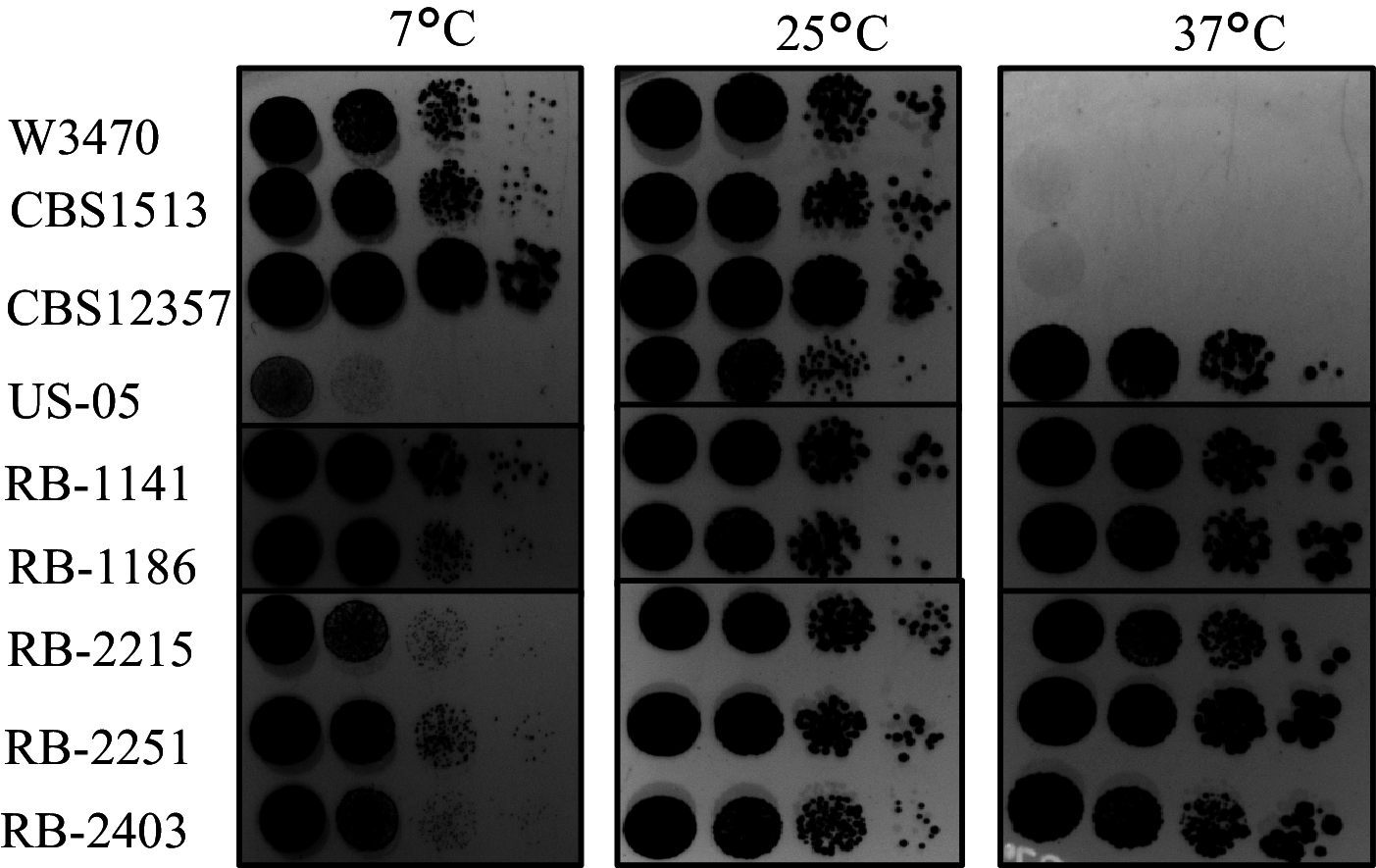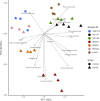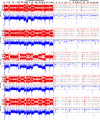Industrially Applicable De Novo Lager Yeast Hybrids with a Unique Genomic Architecture: Creation and Characterization
- PMID: 33188002
- PMCID: PMC7848916
- DOI: 10.1128/AEM.02434-20
Industrially Applicable De Novo Lager Yeast Hybrids with a Unique Genomic Architecture: Creation and Characterization
Abstract
Lager beer is produced by Saccharomyces pastorianus, which is a natural allopolyploid hybrid between Saccharomyces cerevisiae and Saccharomyces eubayanus Lager strains are classified into two major groups based largely on genomic composition: group I and group II. Group I strains are allotriploid, whereas group II strains are allotetraploid. A lack of phenotypic diversity in commercial lager strains has led to substantial interest in the reconstitution of de novo allotetraploid lager strains by hybridization of S. cerevisiae and S. eubayanus strains. Such strategies rely on the hybridization of wild S. eubayanus isolates, which carry unacceptable traits for commercial lager beer such as phenolic off flavors and incomplete utilization of carbohydrates. Using an alternative breeding strategy, we have created de novo lager hybrids containing the domesticated S. eubayanus subgenome from an industrial S. pastorianus strain by hybridizing diploid meiotic segregants of this strain to a variety of S. cerevisiae ale strains. Five de novo hybrids were isolated which had fermentation characteristics similar to those of prototypical commercial lager strains but with unique phenotypic variation due to the contributions of the S. cerevisiae parents. Genomic analysis of these de novo lager hybrids identified novel allotetraploid genomes carrying three copies of the S. cerevisiae genome and one copy of the S. eubayanus genome. Most importantly, these hybrids do not possess the negative traits which result from breeding wild S. eubayanus The de novo lager strains produced using industrial S. pastorianus in this study are immediately suitable for industrial lager beer production.IMPORTANCE All lager beer is produced using two related lager yeast types: group I and group II, which are highly similar, resulting in a lack of strain diversity for lager beer production. To date, approaches for generating new lager yeasts have generated strains possessing undesirable brewing characteristics which render them commercially inviable. We have used an alternative approach that circumvents this issue and created new lager strains that are directly suitable for lager beer production. These novel lager strains also possess a unique genomic architecture, which may lead to a better understanding of industrial yeast hybrids. We propose that strains created using our approach be classified as a third group of lager strains (group III). We anticipate that these novel lager strains will be of great industrial relevance and that this technique will be applicable to the creation of additional novel lager strains that will help broaden the diversity in commercial lager beer strains.
Keywords: Saccharomyces cerevisiae; Saccharomyces eubayanus; Saccharomyces pastorianus; fermentation; hybridization; mating; yeasts.
Copyright © 2021 Turgeon et al.
Figures






Similar articles
-
Understanding brewing trait inheritance in de novo Lager yeast hybrids.mSystems. 2024 Dec 17;9(12):e0076224. doi: 10.1128/msystems.00762-24. Epub 2024 Nov 12. mSystems. 2024. PMID: 39530669 Free PMC article.
-
Himalayan Saccharomyces eubayanus Genome Sequences Reveal Genetic Markers Explaining Heterotic Maltotriose Consumption by Saccharomyces pastorianus Hybrids.Appl Environ Microbiol. 2019 Oct 30;85(22):e01516-19. doi: 10.1128/AEM.01516-19. Print 2019 Nov 15. Appl Environ Microbiol. 2019. PMID: 31519660 Free PMC article.
-
Inheritance of brewing-relevant phenotypes in constructed Saccharomyces cerevisiae × Saccharomyces eubayanus hybrids.Microb Cell Fact. 2017 Apr 21;16(1):66. doi: 10.1186/s12934-017-0679-8. Microb Cell Fact. 2017. PMID: 28431563 Free PMC article.
-
Microbe Profile: Saccharomyces eubayanus, the missing link to lager beer yeasts.Microbiology (Reading). 2018 Sep;164(9):1069-1071. doi: 10.1099/mic.0.000677. Microbiology (Reading). 2018. PMID: 30175956 Free PMC article. Review.
-
Novel brewing yeast hybrids: creation and application.Appl Microbiol Biotechnol. 2017 Jan;101(1):65-78. doi: 10.1007/s00253-016-8007-5. Epub 2016 Nov 24. Appl Microbiol Biotechnol. 2017. PMID: 27885413 Free PMC article. Review.
Cited by
-
Co-Fermentations of Kveik with Non-Conventional Yeasts for Targeted Aroma Modulation.Microorganisms. 2022 Sep 27;10(10):1922. doi: 10.3390/microorganisms10101922. Microorganisms. 2022. PMID: 36296198 Free PMC article.
-
Isolation and characterization of haploid heterothallic beer yeasts.Appl Microbiol Biotechnol. 2025 Jan 22;109(1):17. doi: 10.1007/s00253-024-13397-8. Appl Microbiol Biotechnol. 2025. PMID: 39841271 Free PMC article.
-
Lager Yeast Design Through Meiotic Segregation of a Saccharomyces cerevisiae × Saccharomyces eubayanus Hybrid.Front Fungal Biol. 2021 Sep 16;2:733655. doi: 10.3389/ffunb.2021.733655. eCollection 2021. Front Fungal Biol. 2021. PMID: 37744092 Free PMC article.
-
Patterns of Genomic Instability in Interspecific Yeast Hybrids With Diverse Ancestries.Front Fungal Biol. 2021 Oct 12;2:742894. doi: 10.3389/ffunb.2021.742894. eCollection 2021. Front Fungal Biol. 2021. PMID: 37744091 Free PMC article.
-
Compensatory Genetic and Transcriptional Cytonuclear Coordination in Allopolyploid Lager Yeast (Saccharomyces pastorianus).Mol Biol Evol. 2022 Nov 3;39(11):msac228. doi: 10.1093/molbev/msac228. Mol Biol Evol. 2022. PMID: 36260528 Free PMC article.
References
MeSH terms
LinkOut - more resources
Full Text Sources
Other Literature Sources
Molecular Biology Databases

